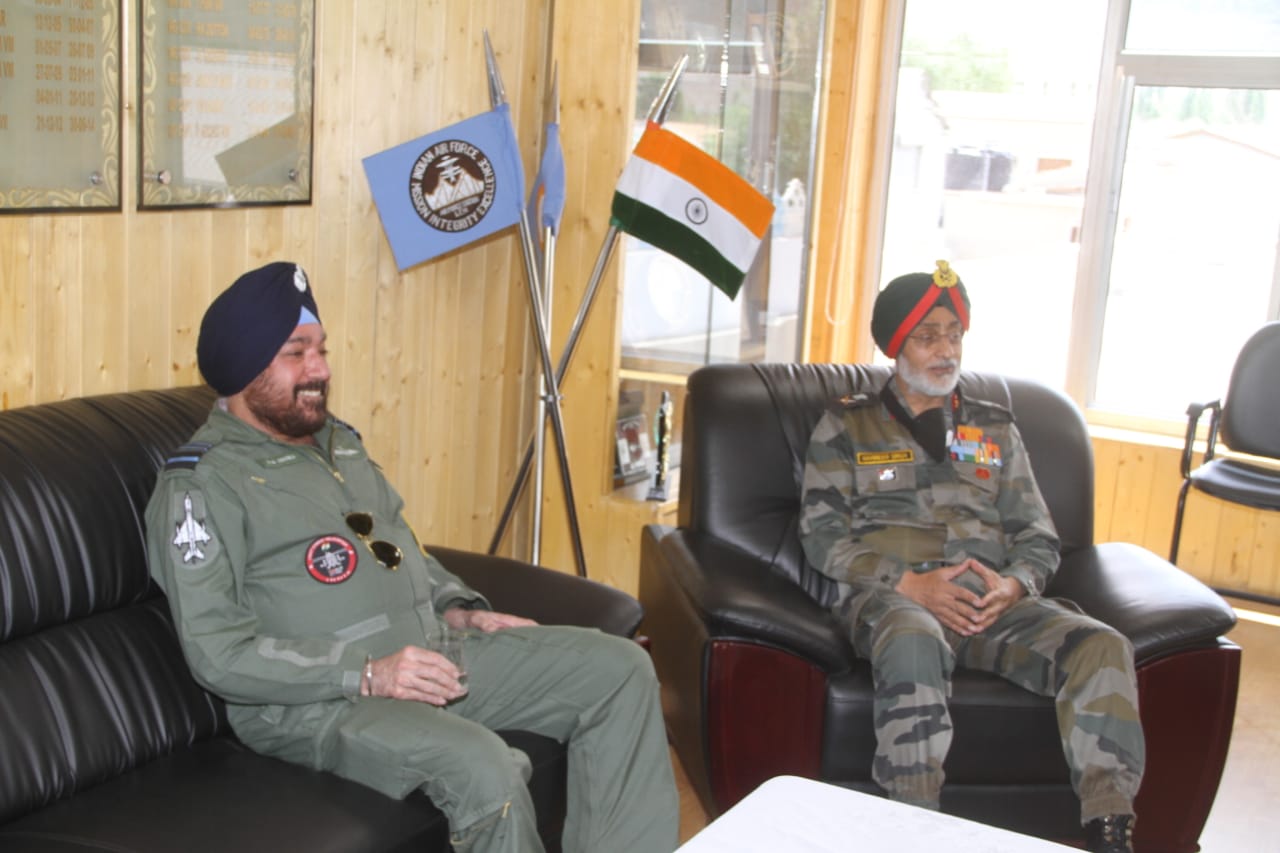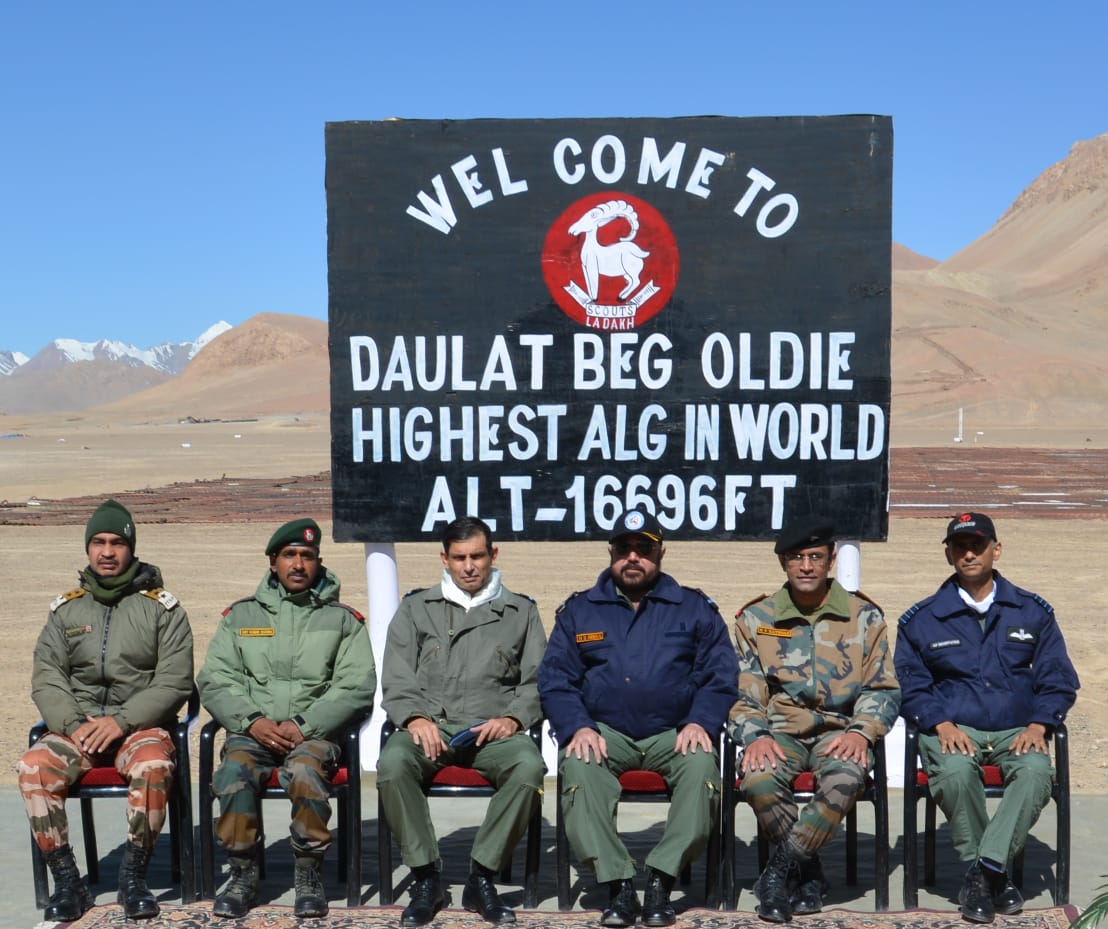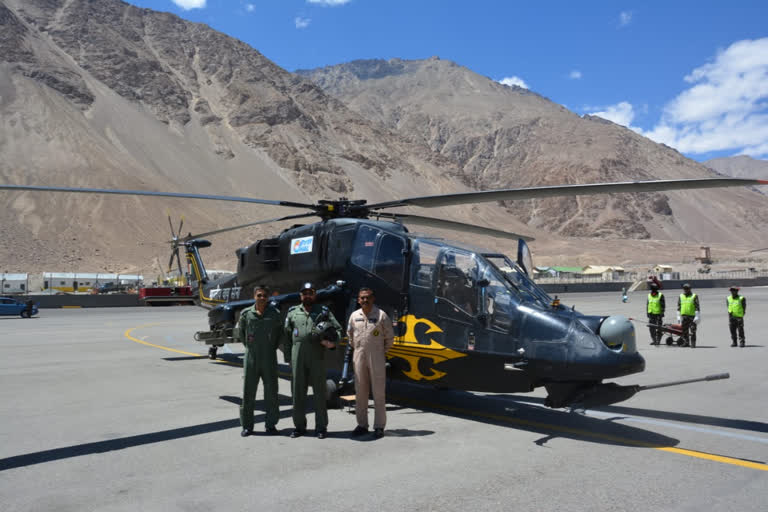New Delhi: Vice Chief of Air Staff Air Marshal Harjit Singh Arora on Friday visited a number of airbases along the Line of Actual Control in eastern Ladakh and took stock of the IAF's operational preparedness to deal with any eventualities in the region, officials said.
They said Air Marshal Singh visited the strategically crucial airbase in Daulat Beg Oldie, known as one of the world's highest airstrip where the IAF has deployed a number of its key platforms in view of the tense border row with China. The airbase is situated at an altitude of 16,600 feet.

In his interaction with senior air warriors, the IAF Vice Chief asked them to ensure a high state of combat readiness at all times, an IAF spokesperson said.
During the visit, Air Marshal Singh also flew Chinook chopper and a light combat helicopter, they said.
The IAF Vice Chief also held talks with Lt Gen Harinder Singh, the commander of the Leh-based 14 Corps of the Indian Army. Lt Gen Singh has held five rounds of high-level military talks with the Chinese army's Major General Liu Lin, the commander of the South Xinjiang military region, in an attempt to resolve the border row.

"Besides reviewing the operational preparedness at these bases, the Vice Chief of Air Staff interacted with air warriors of the combat units currently operating at these locations. He was briefed about the operational readiness of IAF assets deployed in the area," the spokesperson said.
In the last two months, the IAF deployed almost all its frontline fighter jets like Sukhoi 30 MKI, Jaguar and Mirage 2000 aircraft in the key frontier air bases in eastern Ladakh and elsewhere along the LAC.
The IAF has been carrying out night time combat air patrols over the eastern Ladakh region in an apparent message to China that it was ready to deal with any eventualities in the mountainous region.
Read: Impact of Chinese incursion in Ladakh and Jammu and Kashmir
The IAF has also deployed Apache attack choppers as well as Chinook heavy-lift helicopters to transport troops to various forward locations in eastern Ladakh.
Sources said the IAF will continue to maintain its high state of readiness in all the bases along the Line of Actual Control till the border row is resolved to India's satisfaction.
India and China have held several rounds of diplomatic and military talks aimed at the disengagement of troops from friction points in eastern Ladakh.
On August 2, the two armies held the fifth round of Corps commander-level talks in an effort to expedite the disengagement process.
At the talks, the Indian side insisted on complete disengagement of Chinese troops at the earliest, and immediate restoration of status quo ante in all areas of eastern Ladakh prior to May 5 when the standoff began following a clash between the two armies in Pangong Tso.
The Chinese military has pulled back from Galwan Valley and certain other friction points but the withdrawal of troops has not moved forward from the Finger areas in Pangong Tso since mid-July, according to sources.
India has been insisting that China must withdraw its forces from areas between Finger Four and Eight. The mountain spurs in the area are referred to as Fingers.
The formal process of disengagement of troops began on July 6, a day after a nearly two-hour telephonic conversation between National Security Advisor Ajit Doval and Chinese Foreign Minister Wang Yi on ways to bring down tensions in the area.
(With inputs from PTI)
Also Read: MoD withdraws document admitting to Chinese 'transgression' in Ladakh



